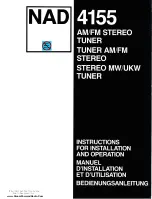
Spectrum Measurements
R&S
®
ESR
330
User Manual 1175.7068.02 ─ 12
Trigger Offset
t2 – t1 = 25 µs
now the gate ranges are relative to t2
Range1 Start
t3 – t2 = 15 µs
start of range 1 relative to t2
Range1 End
t4 – t2 = 553 µs
end of range 1 relative to t2
6.1.1.11
Measuring the Third Order Intercept Point (TOI)
In order to measure the third order intercept point (TOI), a two-tone signal with equal
carrier levels is expected at the R&S
ESR input. Marker 1 and marker 2 (both normal
markers) are set to the maximum of the two signals. Marker 3 and marker 4 are placed
on the intermodulation products.
The R&S
ESR calculates the third order intercept point from the level difference
between the first 2 markers and the markers 3 and 4 and displays it in the marker field.
The third order intercept point is measured using the "TOI" softkey, see
About TOI Measurement
If several signals are applied to a transmission two-port device with nonlinear charac-
teristic, intermodulation products appear at its output at the sums and differences of
the signals. The nonlinear characteristic produces harmonics of the useful signals
which intermodulate at the characteristic. The intermodulation products of lower order
have a special effect since their level is largest and they are near the useful signals.
The intermodulation product of third order causes the highest interference. It is the
intermodulation product generated from one of the useful signals and the 2nd harmonic
of the second useful signal in case of two-tone modulation.
The frequencies of the intermodulation products are above and below the useful sig-
nals. The
shows intermodulation products P
I1
and P
I2
generated by the two
useful signals P
U1
and P
U2
.
Measurements
















































